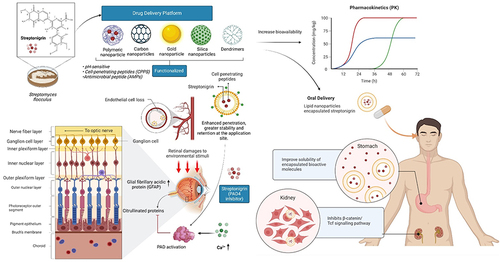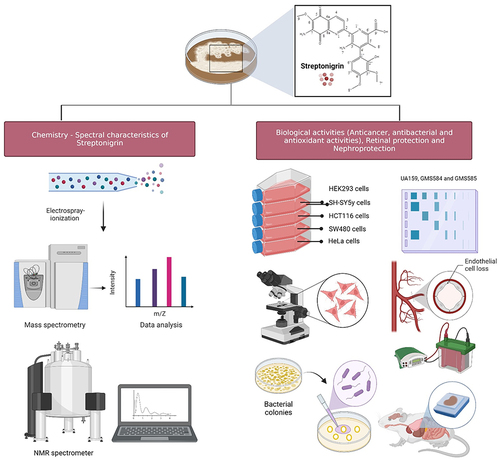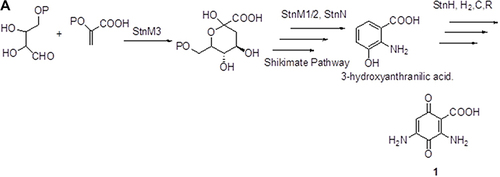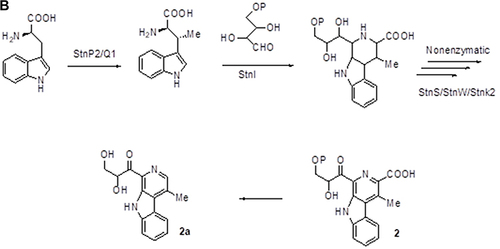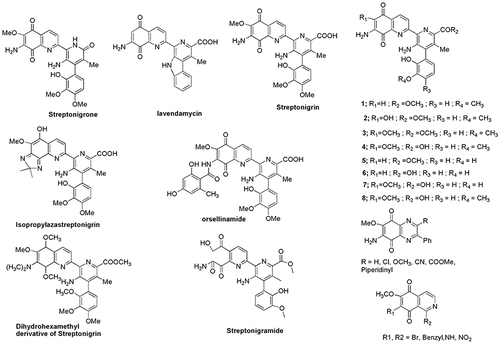Figures & data
Figure 1 Role of streptonigrin in the management of various diseases.
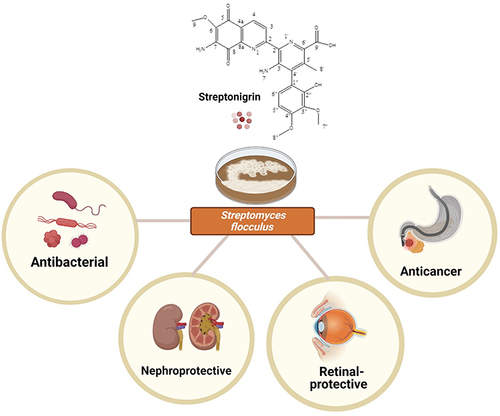
Figure 3 (A) Biosynthesis of the key intermediate 1 for streptonigrin. (B) Biosynthesis of the intermediate 2 for streptonigrin. (C) Final step in the biosynthesis of streptonigrin.
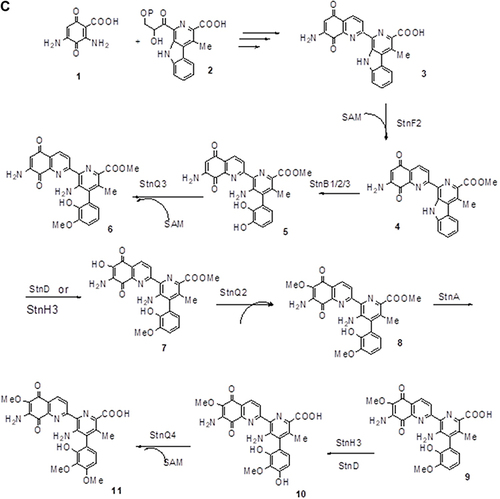
Figure 4 Anticancer activities of streptonigrin-transfected SW480 cells and HEK293 cells. Streptonigrin interferes with the complex formation of β-catenin/Tcf with DNA by downregulating β-catenin/Tcf signaling by blocking the upstream GSK-3β.
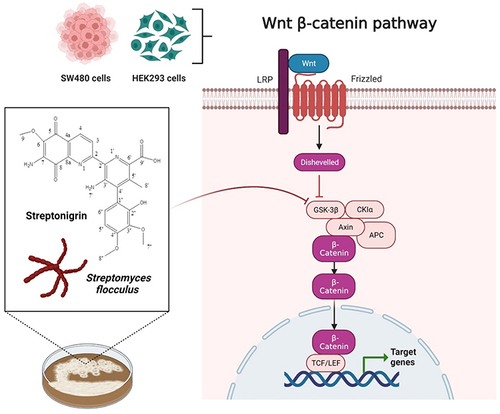
Figure 6 Future perspectives for managing retinal damage/injuries utilizing the nanotechnology platform. Efficient intraocular drug/compound delivery is extremely complex. Hence, nanocarriers such as micelles, which have been shown to be ideal drug delivery systems for maintaining compound/drug concentrations in the posterior region of the eyeball, may be conjugated with cell-penetrating peptides to enhance the penetration of streptonigrin. Streptonigrin can inhibit PAD4, and thus would be able to inhibit the citrullination of GFAP, which may contribute to chronic changes in Müller glia. Apart from that, it can also be used for oral delivery to the stomach as well as to the kidney.
